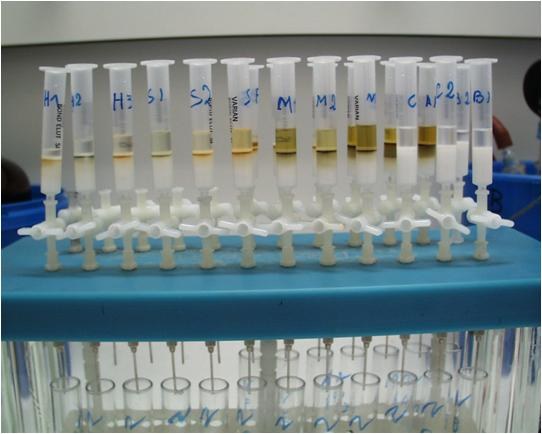Lipid analysis
Lipids in biological matrix
Lipids are widely distributed in all living cells. They encompass molecules such as neutral lipids, waxes, carotenoids, steroids, phospholipids and glycolipids, which all are characterized by fatty acids as major component. Lipids play a vital role in organisms, both as source of energy (i.e. neutral lipids) and as structural components of cell membranes (i.e. phospholipids). In our lab we use different protocols to transfer lipids from biological matrix into fatty acid methyl esters (FAMEs) by transesterification using methanol. Standard materials examined are soil substrate, microorganisms, plant material and animal tissue.
Cellular lipids
To gain total cellular lipids saponification is conducted in a sodium hydroxidemethanol solution, followed by acid methanolysis in HCl-methanol. The FAMEs are extracted into hexane/methyl tertiary butyl ether and washed with aqueous sodium hydroxide.
Lipid fractionation
To separate lipids into glycolipid, phospholipid and neutral lipid fractions they are extracted from samples by a single phase extraction solvent (chloroform/methanol/citrate buffer). After phase separation lipids are transferred to silica acid columns and eluted with chloro-form (neutral lipids), acetone (glycolipids) and methanol (phospholipids). Trans-esterification is carried out by mild alkaline hydrolysis via methanol.
